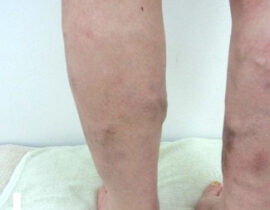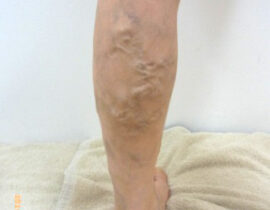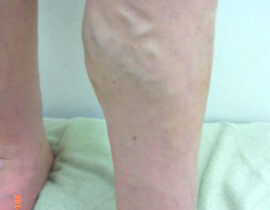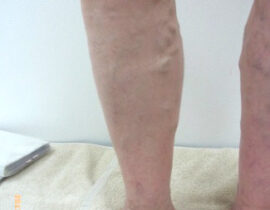What Are Varicose Veins?
One-way valves are damaged and blood vessel dilates
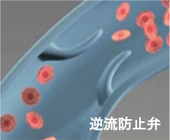
Blood circulates in our body from the heart at the center and supplies oxygen and nutrition throughout the body. Blood is sent out from the heart through artery, and returns to the heart through vein mainly with the calf muscle working as a pump.
But calf muscle doesn’t keep pushing venous blood with constant power, but repeats pushing and stopping. When it stops pushing, venous blood goes down by gravity.
One-way valve in vein prevents this venous blood from flowing backward.
Varicose vein occurs because this one-way valve is damaged and doesn’t function properly. When this one-way valve is damaged, blood flows backward and blood vessel expands. Expanded blood vessel stands out on the surface of leg or expands like a knob.
This is varicose vein.
The area one-way valve is fragile
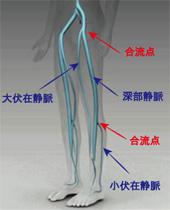
The areas where one-way valve that prevents back flow of blood can be damaged easily are groins and the back of knees where deep vein and superficial vein are interconnected.
There are two types of superficial veins in lower extremities. One is greater saphenous vein that starts from inside of ankle, travels lower extremities and inside of thigh and merges femoral vein at the inguinal region (inside of groins). Another one is lesser saphenous vein which starts from outside of ankle, runs up the center of calf and merges deep vein at the back of knee. These two veins are connected with many branched blood vessels.
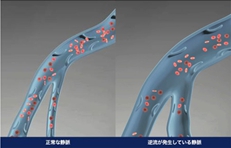
When a person is standing still, the muscle pump doesn’t work hard and the speed of blood’s going back to the heart becomes slow. But the amount of blood sent out from the heart remains the same; therefore blood stays in legs (blood congestion.)
Then vein and one-way valve spreads out because of the pressure inside the vein, and burdens on them increase. When burdens are put repeatedly, the valve can’t bear the burden and a gap is created between valves between 2 valves, which induce blood backflow. When it progresses, the valve will be damaged completely and the preventive function of backward flow doesn’t work (valve malfunction.) Then, blood flows backward in large amount and stays lower leg, and varicose vein is created.
What happens if you leave varicose vein without treatment
Once varicose vein is developed, basically it will not cure naturally but worsens gradually although the speed of progress varies among the people. Very rarely, varicose vein itself apparently improves because of thrombosis, but it is accompanied by very strong pain. It is safe to say that varicose vein will not cure nor improve without treatment by medical specialist.
People tend to leave varicose vein untreated because it will not lead to death, necrosis or amputation of legs. However, once varicose vein becomes severe case, incurable ulcer or severe skin disease may be induced.
Although varicose vein could be the direct cause of pulmonary embolism where a lump of blood (thrombosis) blocks the pulmonary artery, it is rare. But there is a report that since varicose vein is a burden on deep vein, thrombosis can be formed there easily. When that thrombosis blocks pulmonary artery, it is called economy syndrome. Therefore, varicose vein could be indirect cause of economy syndrome.

